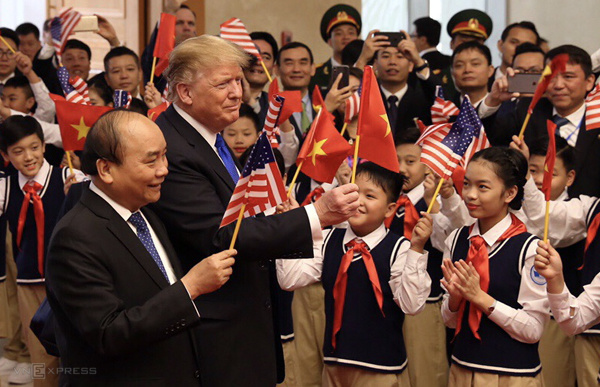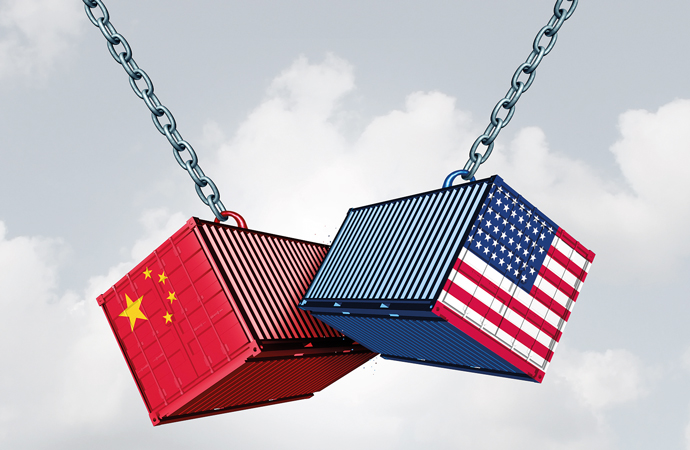
Vietnam’s economy, holding the 47th position among all world economies and the 35th largest economy in terms of Purchasing Power Parity (PPP), shows an improving performance every year in achieving development and accelerating the GDP. The GDP growth is at 10 years high growth rate since 2008, the growth was attributed to the increase in consumption and exports which were accomplished at far above the set target. The reforms made by the government have imminently helped the production factors and relaxation of regulations and policies.
The low inflation rate has also assisted the boost of the economy and the continuous growth and development of the Vietnam economy. The inflation rate (CPI annual variation in %) was 3.5% in 2017. The walking inflation rate of Vietnam’s economy also impacted as a favorable factor for the consumption and export of goods and services in Vietnam’s economy. The GDP is of 241.272 billion USD dollars as per 2018 IMF estimates. Vietnam’s economy has a 2.17% low unemployment rate with a major workforce employed in the agriculture and service sector which in percentage is 38.6% and 34.7% respectively. Their major export partner countries are USA, China, Japan, and South Korea, among these USA has the largest export share.
In the indicators check, the functioning of Vietnam’s economy has shown an impressive performance where they have gained high success in terms of economic growth and development of the economy. During his visit to Vietnam on February 27, 2019, US President, Donald Trump praised the nation’s economy when he addressed them at Hanoi. He said, “Vietnam is thriving like few places on earth”. President Trump appreciated the economic advances made by the Vietnamese administration which resulted in the high economic growth rate of the country. He even added that Vietnam can set an example, following which North Korea can achieve economic advancement if it denuclearizes.
Vietnam’s economy expanded faster than expected in the second quarter of this year. All was possible because of the ongoing trade war between China and the US. Vietnam’s GDP in the second quarter of this year rose to 6.71%, which was slightly lower than the revised 6.82% in the first quarter of this year as per the statistics updated by the Vietnam General Statistics Office (GSO). According to GSO, the processing and manufacturing sectors, which cover goods and exports, have the fastest-growing pace posting a 9.14% rise. Services output rose 6.85%, against 2.19 % of the agriculture output production rate. Vietnam has been one of the biggest gainers in Asia, from the ongoing trade war between the two largest economies of the world. Because of the tariffs imposed by President Donald Trump on Chinese goods, the manufacturers have moved the production from China to the Southeast Asian country to avoid the tariffs levied by Trump Administration.

Imports from the Vietnam economy to USA surged nearly about 40% year after year in the first four months of 2019, according to the Financial Times estimations, while imports from China over the same period fall by about 13%. The Asian Development Bank has estimated that Vietnam would gain up to a cumulative 2% of the GDP over three years if trade altercation between US and China escalates further. Vietnam’s benefits stand in contrast to other Asian countries which are hit hard by the effect of the trade war. Singapore, Indonesia, South Korea, Thailand, and Malaysia are all facing hurdles in the process of economic growth, but due to economic reforms in Vietnam, the economy is at gain due to the trade war. The Trump administration is taking keen actions towards the manufacturers and exporters of Vietnam and other Southeast Asian countries, to avoid the goods imports from China. US officials have issued objections on goods manufactured in China but labeled as manufactured in Vietnam and Malaysia. The Vietnam government in threat of losing their major trade partner(USA), has stated clear directions for the authentic labeling of Vietnam’s goods, keeping aside the goods of Chinese creation and manufacturing.
In one of his interviews, President Trump said that his administrative policy may impose a tariff on Vietnam, which has benefited from the trade war between USA and China. President Trump, in an interview with the Fox Business host, Maria Bartiromo, stated, “We are in discussion with Vietnam.” indirectly regarding the tariffs and had described Vietnam as “the single worst abuser of everybody”. Vietnam, after the Vietnam war(since 1995) has had its diplomatic relations substantially increased with the bilateral trade between both the countries, which has made progress benchmarks for both, US’s as well as Vietnam’s economy. In 2017, US trade with Vietnam was about $58.2 billion, according to the Office of the US Trade Representative. US economy majorly exports cotton computer chips, and soybeans to Vietnam, whereas US imports Vietnamese goods like textiles and electronics.
The relationship between Vietnam’s economic growth and US-China trade war is directly related. The recent high flourish in Vietnam’s economy is only possible because of the continuous high consumption and export gains made by Vietnam’s economy. The threatening remarks from President Trump about imposing tariffs to Vietnam is a situation of a dilemma for Vietnam’s economy. The Vietnam Administration has already made a clarification of strict action against those who promote the Chinese products export to US through the process of ‘fake made in Vietnam labeling’.” Several steps to avoid tariff rift in Vietnam’s economy are exercised and would be taken time to time as the need arises in ensuring smooth functioning of the trade relations”, administration authorities of Vietnam said.
By Priyansh Mishra- TYBcom (Mithibai College)
Literary Sources- Asia News Monitor, businessinsider.com, www.ft.com, thestar.com
Image Sources- reddot.link, businessstandard.com
